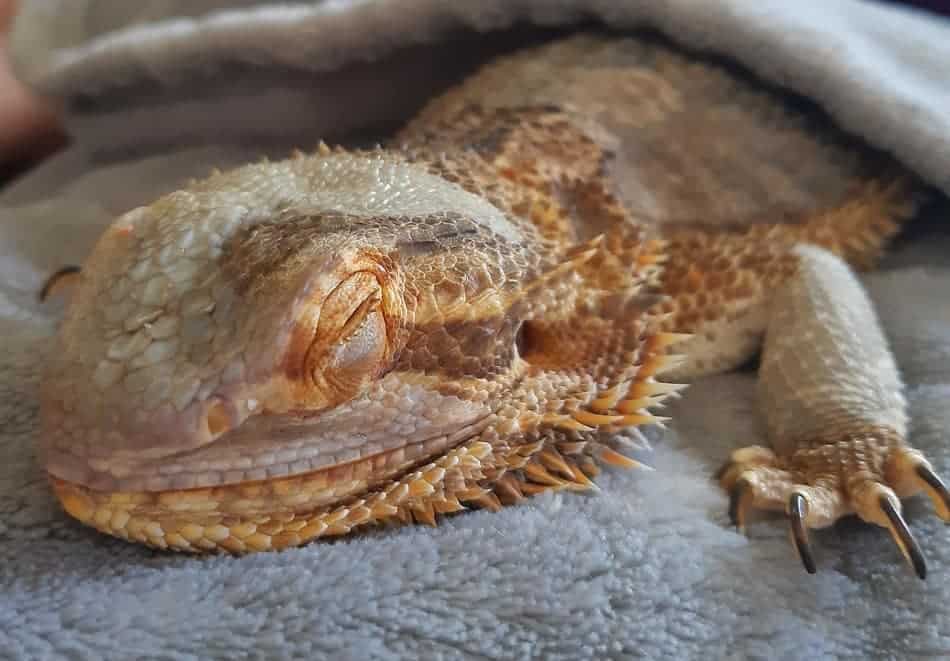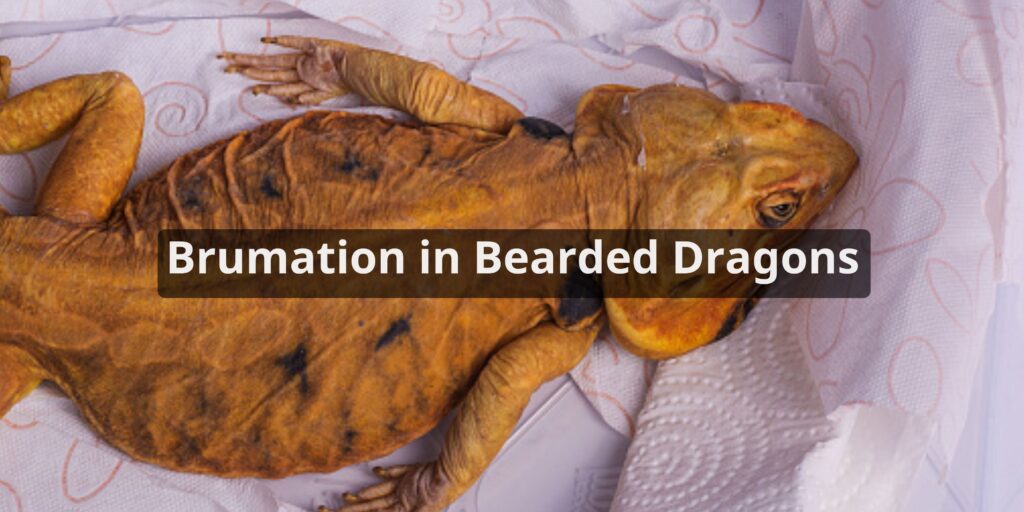Brumation is a fascinating natural phenomenon seen in reptiles like bearded dragons where they enter a dormant state similar to hibernation in mammals. As responsible bearded dragon owners, it’s crucial we understand brumation so we can properly care for our reptilian friends during this period. In this article, we’ll explore what exactly brumation is, what causes it, signs to look out for, and how to ensure your bearded dragon in brumation.
What is Brumation?

Brumation refers to a period of dormancy and reduced activity levels in cold-blooded reptiles during colder seasons. It’s similar to hibernation in mammals but differs in that reptiles can still wake to drink water and don’t fully shut down their metabolic processes.
For bearded dragons, brumation typically occurs during the winter months when temperatures drop and daylight hours decrease. Their bodies instinctively know it’s time to conserve energy due to the harsher conditions, so they start sleeping more, eating less, and being overall less active.
What Causes Brumation in Bearded Dragons?
There are two key factors that trigger brumation in bearded dragons:
Decreasing Daylight Hours
Bearded dragons are extremely sensitive to light and darkness. In the wild, shorter daylight hours in the winter signal it’s time to brumate. We can replicate this light change in captivity by slowly reducing the number of hours we keep lights on each day.
Lower Ambient Temperatures
Colder ambient temperatures, dropping into the 60s F, also provide an important signal for brumation. Gradual temperature reductions should mimic natural seasonal drops.
Signs Your Bearded Dragon is Brumating
Here are some common signs that your bearded dragon is starting brumation:
- Increased periods of sleeping and lethargy
- Loss of appetite and eating less frequently
- Weight loss (should not exceed 10% of body weight)
- Less interest in social interaction and handling
- Darker beard coloring
- Long soakings in the water dish
- Infrequent bowel movements
Caring for a Bearded Dragon in Brumation
Brumation is a normal, healthy cycle for bearded dragons but they still require special care during this time:
- Adjust temperatures: Slowly decrease ambient and basking temperatures by around 10-15°F to mimic natural drops. Never let temps fall dangerously low.
- Reduce photoperiod: Cut back daylight hours to 8-10 hours a day. Use a timer to regulate the lighting schedule.
- Provide water: Check water dish daily, replace with fresh water. Consider a drip system to keep water available.
- Offer food periodically: Try every 10-14 days. Avoid force feeding. Remove uneaten insects after 15 mins.
- Monitor weight: Weigh regularly. Seek vet advice if weight loss exceeds 10%. Rehydrate with fluids if needed.
- Check appearance: Watch for signs of illness e.g. discharge, labored breathing, lethargy. Continue observing handling, soaking, grooming as needed.
With attentive care tailored to their brumation state, bearded dragons can pass through this period safely and return to normal in the springtime as days lengthen and temperatures rise. It’s an incredible adaptation that helps them thrive seasonally!
Conclusion
Brumation is a natural semi-hibernative state where bearded dragons become dormant and minimize activity levels in winter. Shorter daylight hours and colder ambient temperatures trigger their instinct to brumate. Signs like increased sleeping, loss of appetite and lethargy indicate brumation’s onset. With proper monitoring and adjusted care, like temperature regulation, photoperiod reduction and weight management, bearded dragon owners can ensure their pets stay healthy through their winter dormancy. Brumation reveals the amazing adaptive abilities of these reptiles!
FAQs About Bearded Dragon in Brumation
Is it safe to wake up a bearded dragon from brumation?
Waking a dragon from brumation can be stressful and potentially harmful. Allow them to complete the natural cycle. Only consider waking them if you’re certain it’s necessary for health reasons, and consult a vet.
What’s the role of temperature and lighting during brumation?
Reducing temperature and lighting helps trigger brumation. Lower the basking spot temperature and decrease the photoperiod to simulate winter conditions, which cues the dragon’s natural response to hibernate.
Can brumation be stressful for bearded dragons, and how can I minimize this stress?
Brumation is a natural process and not inherently stressful for healthy dragons. To minimize stress, maintain a quiet, disturbance-free environment, and provide appropriate conditions for brumation.
Are there any health concerns or risks associated with brumation?
While brumation is generally safe, it can hide underlying health issues. Therefore, it’s essential to ensure your dragon is in good health before and after brumation. Regular vet check-ups are advisable.
Should I consult a veterinarian if my bearded dragon enters brumation?
Before and after brumation, it’s wise to consult a reptile veterinarian to assess your dragon’s health. They can offer guidance, ensure your pet is prepared for brumation, and evaluate their condition afterward to address any concerns.



